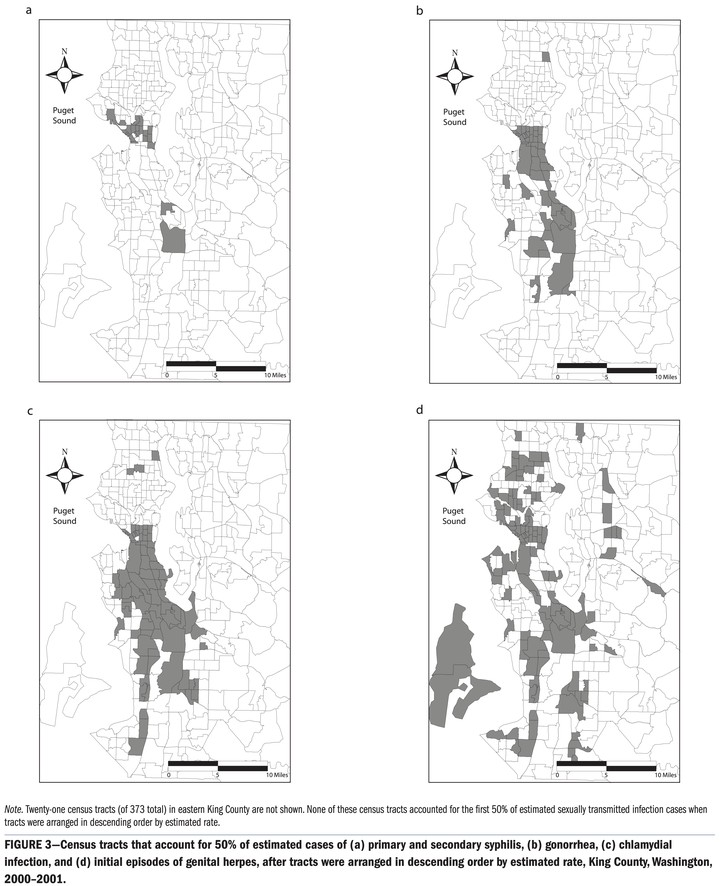
Abstract
Objectives: We measured and compared the concentration of primary and secondary syphilis, gonorrhea, chlamydial infection, and genital herpes in a large county with urban, suburban, and rural settings.
Methods: We geocoded sexually transmitted infections reported to King County, Washington health department in 2000-2001 to census tract of residence. We used a model-based approach to measure concentration with Lorenz curves and Gini coefficients.
Results: Syphilis exhibited the highest level of concentration (estimated Gini coefficient = 0.68, 95% confidence interval [CI] = 0.64, 0.78), followed by gonorrhea (estimated Gini coefficient=0.57; 95% CI=0.54, 0.60), chlamydial infection (estimated Gini coefficient = 0.45; 95% CI = 0.40, 0.43), and herpes (estimated Gini coefficient=0.26; 95% CI=0.22, 0.29).
Conclusions: Geographically targeted interventions may be most appropriate for syphilis and gonorrhea. For less-concentrated infections, control strategies must reach a wider portion of the population.